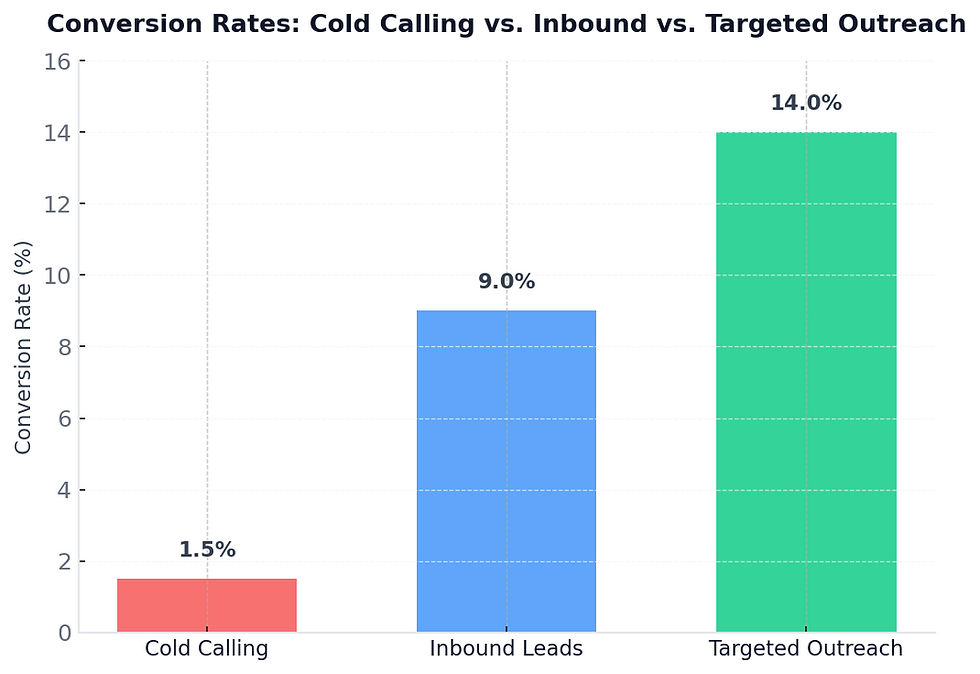5 Signs Your Sales Strategy is Stuck in the Past
- ClickInsights

- Aug 20
- 4 min read
Is Your Sales Strategy Stuck in the Past?
Imagine your competitors are closing deals quicker, poaching the very customers you've been pursuing for months, and establishing relationships with prospects before you even know they're there. You have a good team, great products, and decades of experience, but nothing seems to be working. The reality is, most sales teams are unconsciously running on old strategies in an environment where buyers have changed.
Today's buyers research extensively online, expect personalized experiences, and make decisions more quickly than ever before. If your approach still leans heavily on old methods, you might be losing opportunities without even knowing it. In this article, we'll walk through five clear signs that your sales strategy is behind the times and provide actionable tips to modernize your approach. By implementing these changes, you are able to increase conversions, deepen relationships, and get ahead of the competition.

Sign 1: Depending Too Much on Cold Calling
Cold calling still exists, but depending on it as your main way to find prospects is risky. Buyers now prefer to reach out by social channels, consume beneficial content, or be reached out to individually. Statistics confirm that cold calling conversion rates are much lower than those of inbound sources, and buyers tend to view unsolicited calls as intrusive.
Instead of relying solely on cold calling, begin establishing a social selling footprint, dispatch highly targeted outreach communications, and use intent data to reach buyers when they are actively evaluating solutions such as yours.

Sign 2: Overlooking Digital Buyer Behavior
If your sales team is not monitoring online activity, you are missing critical hints about buying interest. Online body language, like website visits, downloads of content, attendance at webinars, or repeated returns to your pricing page, gives you a clear indication of where a prospect stands in the buying process.
For instance, one customer may check your pricing page three times within a week. Your team might fail to identify the ideal time to follow up without insight into that behavior. Use tools to monitor and track such interactions so that your team can take action at the best time.
Sign 3: One-Size-Fits-All Sales Pitches
Standard sales scripts struggle to capture attention in a crowded marketplace. Customers anticipate that you know what their issues are and talk to them about their pain points. If each prospect hears the same message, interest decreases and opportunities are lost.
Personalization isn't a nicety anymore, it's the norm. Leverage CRM information, look at previous interactions, and study buyer behavior to customize your pitch. This renders your outreach more relevant, accelerates trust-building, and improves your likelihood of advancing the discussion. . For a deeper look at how personalization begins with these digital signals, check out our blog on The End of Cold Outreach: Personalisation Starts with Digital Signals.”
Sign 4: Forecasting Based on Gut Feelings
Depending on "experience" alone to forecast future sales usually fails to meet targets and resources being wasted. Forecasting based on intuition may be intuitive, but in the absence of data to support it, precision is compromised.
The answer is in embracing AI-driven analytics and making use of past performance data. These can uncover trends, identify risks, and come up with accurate forecasts so you have confidence in resource planning and strategy.
Sign 5: Sales and Marketing being regarded as Two Different Worlds
The silo days of sales and marketing are behind us. Buyers now expect aligned messaging and a seamless experience from awareness to decision. When these teams function in silos, the outcome tends to be inconsistent messaging, lost credibility, and extended sales cycles.
To correct this, build joint campaigns, set mutual KPIs, and monitor the buyer journey collectively. This guarantees prospects are given a consistent experience regardless of where they are in the funnel.
How to Begin Updating Your Sales Approach
The following are some fast methods to begin:
Evaluate your tech stack to ensure you have the right tools for tracking and engaging with prospects.
Educate your staff in data literacy so that they can make knowledge-based decisions.
Create a content-based sales funnel that drives and engages leads.
Align sales and marketing teams to share goals and deliver consistent messaging.
Conclusion
If old-school tactics hold back your sales approach, you're not only holding back growth. you're letting more nimble competition take your piece of the pie. The modern sales world moves quickly, and buyers come to the table with more knowledge than ever. They want you to know what they need, respond when they expect you to, and bring value to the table before they sign on.
Sales today is no longer about pushing products; it's about walking buyers through their decision-making journey and meeting them where they are. When you adopt data-driven insights, personalized interaction, and alignment between sales and marketing, you become the partner buyers want to work with.
It's time to examine your current process, look for outdated methods, and begin making deliberate improvements. Small, regular changes can revolutionize your outcomes over the long run. Your next huge success might be only a single smart change away, if you start now.



Comments